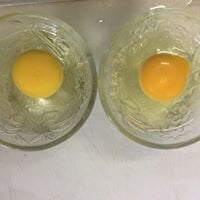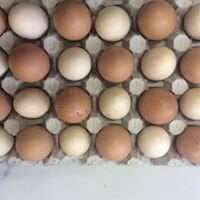Good greetings to you all.
I want to stir up a contradictory topic.To get started ,broiler chickens are fleshier than backyard chickens although they on average take a mere 6 weeks to mature.In contrast to backyard chickens can take more than 12 weeks to mature and still may not be as fleshy as a broiler chicken which took less than half of the duration to mature. Certainly broiler chickens are more profit oriented but if you are talking health wise, you should most probably opt for the backyard chickens. "Why?", you may ask. From an experiment that I conducted, broiler chicken bones are not fully developed henceforth making them significantly softer than bones of the backyard chickens indicating that they have less calcium content. Ultimately the nutritional value of the broiler meat if less than that of the backyard chickens. My last comparison is that of layers eggs and that of backyard chickens. Layer eggs have a feint yellow colour in some cases almost pale whereas that of backyard chickens are a rich bright yellow in colour.What do you think of this approach published by www.agrictechsales.com


I want to stir up a contradictory topic.To get started ,broiler chickens are fleshier than backyard chickens although they on average take a mere 6 weeks to mature.In contrast to backyard chickens can take more than 12 weeks to mature and still may not be as fleshy as a broiler chicken which took less than half of the duration to mature. Certainly broiler chickens are more profit oriented but if you are talking health wise, you should most probably opt for the backyard chickens. "Why?", you may ask. From an experiment that I conducted, broiler chicken bones are not fully developed henceforth making them significantly softer than bones of the backyard chickens indicating that they have less calcium content. Ultimately the nutritional value of the broiler meat if less than that of the backyard chickens. My last comparison is that of layers eggs and that of backyard chickens. Layer eggs have a feint yellow colour in some cases almost pale whereas that of backyard chickens are a rich bright yellow in colour.What do you think of this approach published by www.agrictechsales.com






